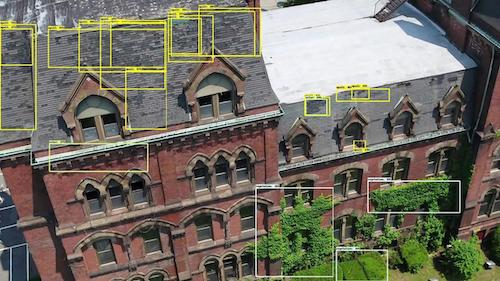MONDAY, NOVEMBER 30, 2020
International engineering firm Thornton Tomasetti recently announced the launch of a software as a service platform that uses artificial intelligence to identify and assess damage and deterioration in building envelopes and structures.
The software, dubbed T2D2, was developed within Tomasetti’s CORE studio incubator and commercialized through the firm’s TTWiiN accelerator.
According to the firm, T2D2 applies data from the firm’s more than 50 years of building inspection and forensic investigation work and aims to ease the job of inspecting structures and enable users to identify issues before they become major problems.
The Tech
According to T2D2 founder and CEO Badri Hiriyur, Director of CORE AI at Thornton Tomasetti, the AI within T2D2 has been applied to identify visual anomalies and other signatures of deterioration on facades and structures. The software analyzes digital images or videos taken by any type of camera and then detects and identifies conditions of deterioration.

 |
| Thornton Tomasetti |
|
International engineering firm Thornton Tomasetti recently announced the launch of a software as a service platform that uses artificial intelligence to identify and assess damage and deterioration in building envelopes and structures. |
“The emergence of big tech with big computing and big data made T2D2 possible. T2D2 uses the same deep convolutional neural networks powering state-of-the-art computer vision models,” Hiriyur said.
“It is trained using a cluster of powerful NVidia GPUs on a vast dataset built from tens of thousands of images from Thornton Tomasetti’s extensive database of building structures and facades as well as bridges and other infrastructure. Using data acquisition and analysis and telemetry to replace traditional methods of inspection saves time and money – and there can be tremendous value with its continuous use. T2D2 will identify even the smallest anomaly, such as a hairline crack, which might not be picked up between prescribed inspection cycles but can deteriorate quickly and lead to costly problems.”
According to the company, the technology also knows when it sees a crack or a change in previously detected damage. The detected damage conditions can be geolocated on structures and presented in digital assessment reports that get updated in real-time. The system continues to refine its findings over time, as it “learns” the specifics of each asset/structure.
Tomsetti adds that T2D2 has been tested on numerous building envelopes and structures across the United States and Canada and “has been used to scan for damage and deterioration on roofs of million-square-foot industrial properties in California, joints on historic stone bridges in Maine, brick and stone facades in New York City and Chicago, stucco facades of residential towers in Florida, concrete transportation systems, water treatment facilities in New York, and more.”
“T2D2 is much more than an inspection tool,” said Thomas Scarangello, Executive Chairman of Thornton Tomasetti. “It will help our clients better manage their structures and building envelopes, making them more resilient, safer and more economical to maintain throughout their full lifecycle.”
T2D2 is now available for use by property and portfolio owners and managers as well as municipalities to identify deterioration early and throughout the life of an asset.
Other Thornton Tomasetti Work
This time last year, the firm had been looking more closely at carbon, and released results for a multi-year carbon measurement study that identified the type of structure and components in construction with the highest carbon emissions. The company followed up by releasing the very measuring tool—dubbed “Beacon”—it developed into the open market.
“Structural engineers have the opportunity to be leaders in sustainable design because structural materials are the largest contributors to embodied carbon in new construction. Our seven-year study of more than 600 structures using a tool developed in-house to measure embodied carbon is helping us understand the impact design and material choices have on the environment,” said Amy Seif Hattan, Corporate Responsibility Officer at Thornton Tomasetti, at the time.
“We are sharing the first results of our ongoing study in the hope that it will serve to educate our peers and encourage them to contribute data so we can expand our research and support the development of more sustainable and better performing structures.”
The study split structure into commercial, education and residential buildings and found that flooring was the highest material to embody carbon followed by walls, structural foundations, structural framing and, finally, structural columns.
Other findings, according to the company press release, include:
Shortly following the release of the study information, the firm announced that it decided to release Beacon as an open-source tool for structural engineers everywhere.
Tagged categories: Building envelope; Building Envelope; Building facades; Inspection; Technology